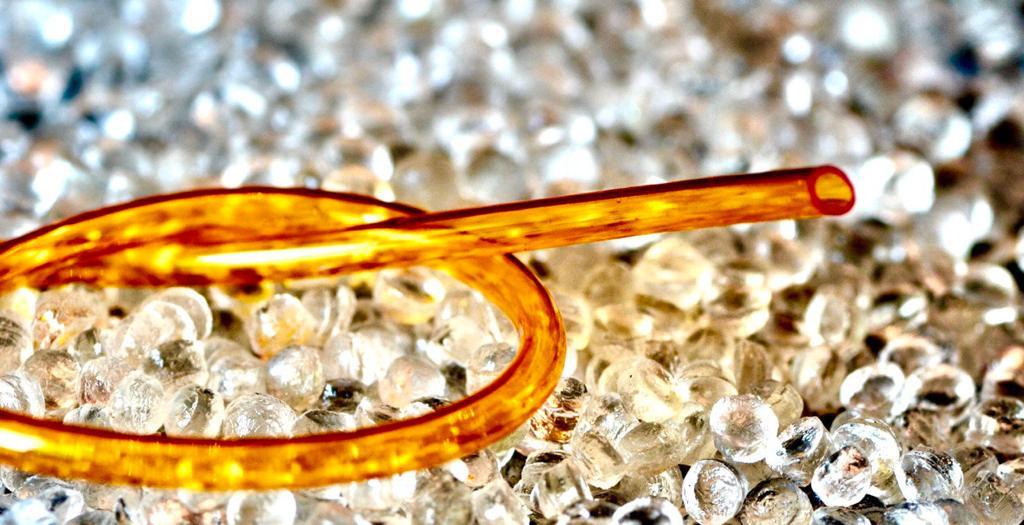Tin base stabilizer

PVC compounds usually have limited heat resistance. To bolster this resistance, tin base stabilizers are employed to counteract PVC degradation caused by heat during processing. Among the most effective stabilizers for enhancing PVC’s heat resistance are those based on tin.
Tin-based compounds can be classified into two categories
:Mercaptides and Carboxylates
. Mercaptide-type stabilizers of tin are suitable for rigid PVC packaging with a PVC coating: These include
-
- MTM (Methyl Tin Mercaptide)
- BTM (Butyl Tin Mercaptide)
- OTM (Octyl Tin Mercaptide)
.Carboxylate-type stabilizers :These include
-
-
- MT (Methyl Tin Carboxylate)
- BTC (Butyl Tin Carboxylate)
- OTC (Octyl Tin Carboxylate)
-
Tin-based heat stabilizers not only provide excellent heat stability but also enhance the initial color. Moreover, due to the direct bonding of tin with methyl groups, they contribute to high transparency in PVC component production.
:Advantages and Disadvantages of Tin-Based Stabilizers
“Tin-based stabilizers” exhibit very high efficiency. They are suitable for various PVC processes, including size-reduced and rigid PVC, as well as injection and extrusion systems. However, one of the disadvantages of tin-based stabilizers is the odor resulting from the presence of sulfur in mercaptides, which leads to a stronger odor in soft PVC due to plasticizer migration. Additionally, the high cost of tin metal in these stabilizers is a concern.
:solution
One available solution to reduce the cost of tin-based stabilizers is to combine them with compatible materials. For example, tin and lead do not have compatibility, leading to material discoloration. Therefore, a heat stabilizer should be used that does not have undesirable interactions with tin-based heat stabilizers.
One of these compatible options is “Calcium Zinc Stabilizer,” which not only avoids undesirable interactions with tin-based stabilizers but also synergizes with them. This type of stabilizer is in the form of a paste-like metallic soap. It is suitable for medical and sanitary (clear) grades. Calcium Zinc paste provides long-term heat stability, excellent initial color, and transparency. This stabilizer can act as a co-stabilizer for tin-based mercaptides in transparent food packaging and PVC films. Its impact can be further enhanced by adding epoxy soybean oil.
For cost reduction in PVC compound production, cost-effective materials are used, in addition to the desired properties. Tin-based stabilizers are costly. To reduce costs, the dosage of tin stabilizer can be decreased, and it can be combined with a stabilizer like calcium zinc. Because calcium zinc is less expensive than tin, it can be a feasible option. However, the issue with tin stabilizers is not solely their high cost; tin-based mercaptide stabilizers also emit an undesirable odor due to the presence of sulfur in their structure. To address this issue, calcium zinc stabilizer can be added to tin stabilizers.
:Recommended Formulation
For PVC formulation, the ratio of adding tin-based stabilizers and calcium zinc paste (Payastab CZ 2370P, Payastab CZ 20) is variable. In other words, the lower the Shore A hardness of the material, the less tin-based stabilizer and more calcium zinc paste are added, and vice versa. For example, for materials with a Shore A hardness above 90, more tin-based stabilizer should be added, and calcium zinc paste can be used as a plasticizer and co-stabilizer in the compound.
For materials with a Shore A hardness of around 60-70, which are among the most common granules, approximately 100-150 grams of tin-based stabilizer and 1 to 1.2 kg of calcium zinc paste per 100 kg of PVC powder are needed. Therefore, the amount of tin-based stabilizer depends on the amount of plasticizer present in the PVC formulation. The more plasticizer is used, the less tin-based stabilizer is required.

